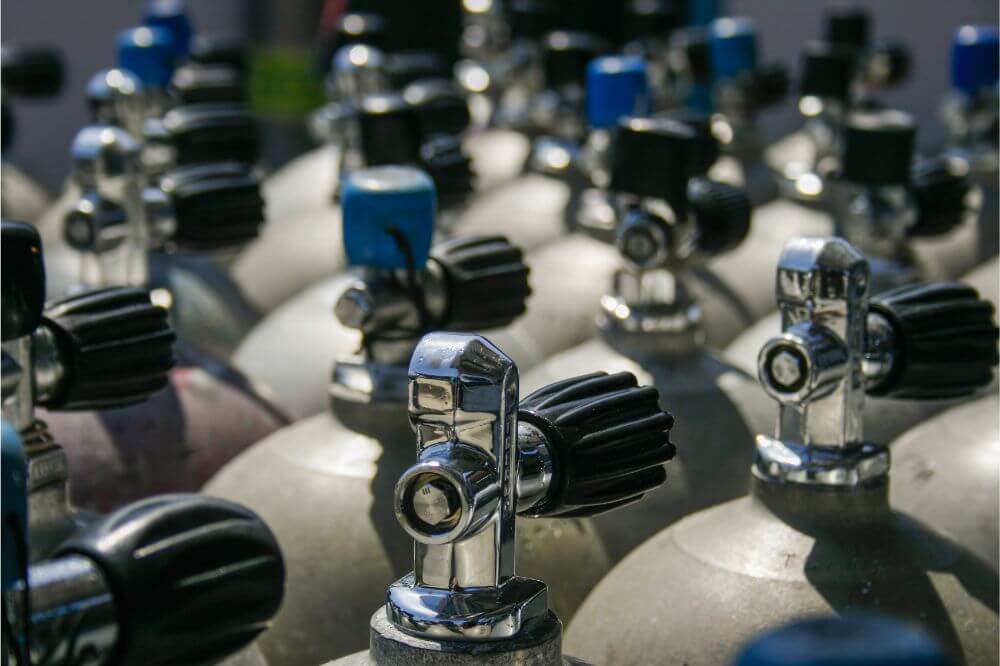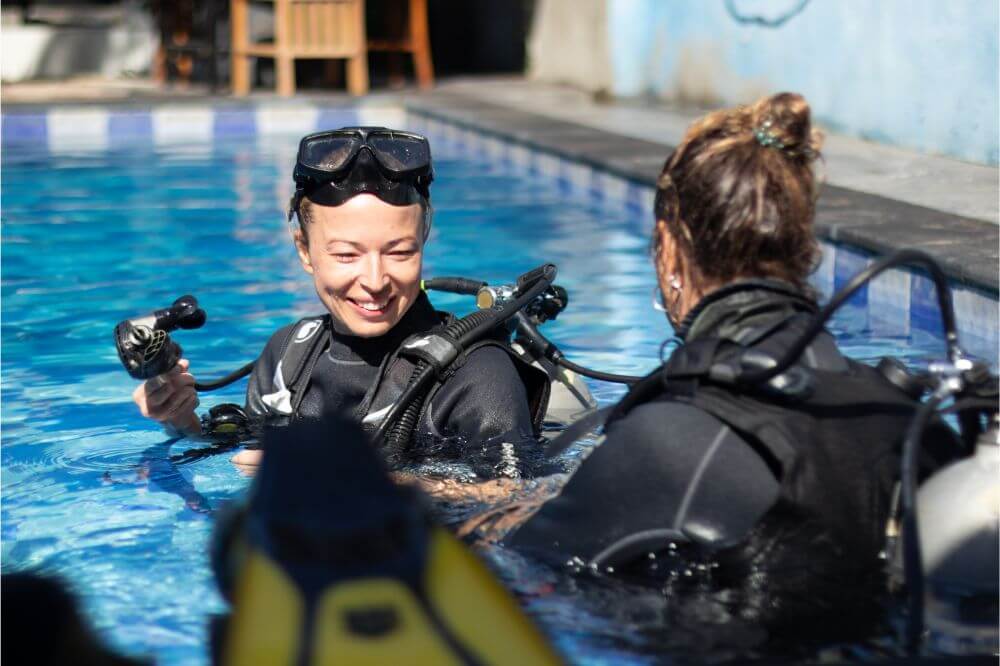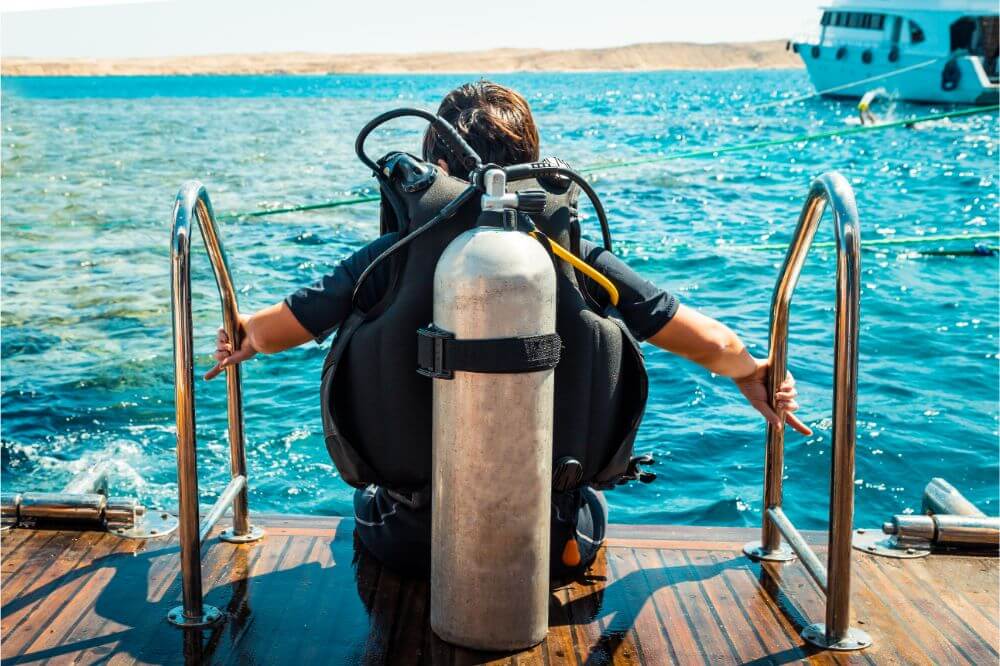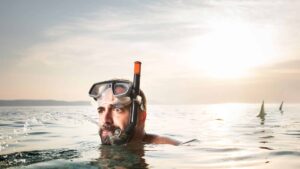When we say, ‘Spare Air,’ we’re talking about a specific product, a unique air system designed for scuba divers who need extra air when an emergency arises.
Spare Air is a product designed to save your life when your main tank runs out of air or suffers a malfunction.
But, first, let’s discuss what Spare Air is, why you might want to use it, and what it can do for you.
Contents
Scuba Tanks and Air Limits
First, you need to know how much air your scuba tank can hold and how long that will last you.
A standard scuba air tank is usually an aluminum 80 cubic foot tank.
Moreover, if we say that the diving depth is 40 feet, which is pretty average, this means that you will be able to stay underwater for anywhere from 45 to 60 minutes before you need to surface (with a safe amount of air reserve left in the tank).
Air runs out eventually, even if it lasts for a full hour, and when you are scuba diving, things can and sometimes go wrong.
Of course, if you run out of the air when you’re at depth, you will have a significant problem.
How long a tank of air will last will depend on several factors, including:
- The size of the tank you are using
- The type of gas mixture you are using
- How much oxygen your body consumes
- How deep you are diving, and more.
The reality is that if you’re not monitoring your gauges and you run out of air, you are going to have a problem, especially if you return to the surface without any decompression stops.
So, therefore, having Spare Air will buy you some time.

Scuba Diving Air Consumption
You need to know is how much air you consume while diving.
Let’s say your tank has enough air to last you for 60 minutes – a full hour. But that’s on the surface.
Once you dive to 33 feet, your air consumption is double that at the surface.
At 66 feet, your air consumption is roughly three times that at the surface.
Therefore, when choosing the right air tank for your dive, keep in mind how deep you plan to dive.
Scuba Diving Reserve Air Rules
Be aware of the rules for reserve air.
Generally speaking, your scuba tank will be divided into 3 sections regarding what your air consumption should look like.
The first third of the air tank should be used for the descent and exploring the bottom.
The second third should be used for the ascent back to the surface.
Now, this is where the reserve air comes into play.
You should always have at least 1/3 of the tank in reserve in case there are any delays or emergencies.
However, with that said, things do sometimes go wrong, and you may run out of air even if you do account for this one-third reserve.
This is what something like the Spare Air emergency redundant gas supply lifesaving system is made for.
The Spare Air Emergency Redundant Gas Supply
We want to quickly look at Spare Air. There are two models to consider, the 300 and the 600.
The Spare Air 300 can provide you with up to 57 surface breaths, and the Spare Air 600 with 114 surface breaths.
Keep in mind that at around 33 feet, you can count on those numbers being half.
The bottom line is that this is a fantastic spare air or reserve air system that can save your life if your primary scuba tank runs out of air or suffers a malfunction.
This can also buy enough time for someone on the surface to lower a full tank down so you can complete your necessary decompression stops.

Conclusion
The bottom line is that you always want to have Spare Air on hand, as well as reserve air in your tank.
Then, if it fails, the Spare Air system can save your life.





